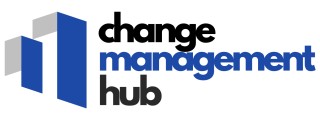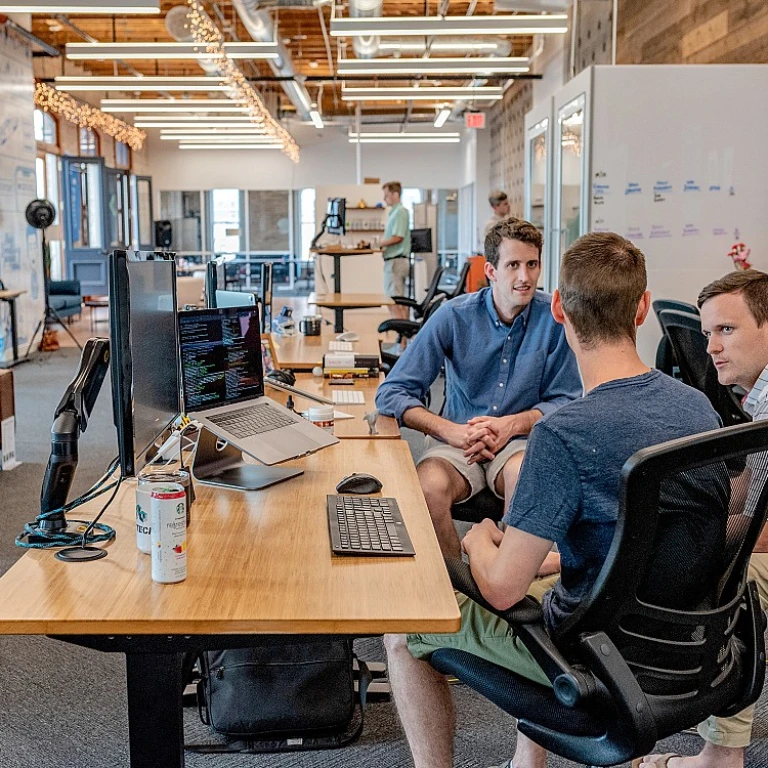
Understanding Remote Employee Tracking
Exploring the Dynamics of Remote Employee Monitoring
In the evolving landscape of remote work, understanding the intricacies of remote employee tracking is crucial. As organizations adapt to new work environments, the need to monitor employee activity has become more pronounced. This is not just about keeping tabs on productivity, but also about ensuring data security and preventing data leaks.
Employee monitoring involves the use of software tools to track various aspects of work, such as time spent on tasks, access to sensitive data, and overall productivity. These tools can provide real-time insights into how remote employees are engaging with their work, helping managers make informed decisions about resource allocation and workflow adjustments.
However, the implementation of monitoring software must be balanced with privacy considerations. Employees may feel their privacy is compromised if monitoring is too intrusive. Therefore, it's essential to establish clear guidelines and communicate the purpose and scope of monitoring activities transparently.
Moreover, integrating monitoring with data loss prevention (DLP) strategies is vital. By doing so, organizations can safeguard sensitive data from unauthorized access and potential breaches. This integration not only enhances security but also supports productivity by allowing employees to focus on their tasks without the constant fear of data leaks.
For those interested in the broader implications of monitoring and data security in change management, exploring effective strategies for handling corrective action requests can provide additional insights into maintaining a balanced approach.
The Role of Data Leak Prevention in Remote Work
Safeguarding Sensitive Data in the Remote Work Landscape
In the age of remote work, where employees often rely on personal devices and reside far from traditional offices, data security emerges as a pivotal concern. As remote employees access and share sensitive data, the risk of data loss and breaches escalates. Thus, organizations must focus on robust strategies for data leak prevention. Monitoring software plays a crucial role in tracking employee activity to safeguard sensitive information. By implementing data loss prevention (DLP) tools, companies can monitor user activity in real time and identify unusual patterns that may indicate potential data leaks. These tools help ensure that sensitive information remains within the secure boundaries of the organization.- Why DLP Matters: The primary objective of data leak prevention is to protect company data, prevent unauthorized access, and reinforce security measures. Effective DLP strategies can considerably boost productivity by allowing remote employees to work efficiently without compromising data security.
- Balancing Act: However, it's essential to balance security measures with employee privacy. Overzealous monitoring can lead to privacy concerns, which might decrease employee productivity and morale. Hence, it's crucial to maintain transparent communication with employees regarding what data is being monitored and why.
Integrating Tracking and Security in Change Management
Implementing Seamless Integration: Merging Tracking and Security
Integrating tracking and security in remote work requires a precise approach that balances monitoring and data protection. Organizations must ensure their strategies involve comprehensive solutions that synergize the benefits of employee monitoring and Data Leak Prevention (DLP) practices. This integration aids in safeguarding sensitive data while promoting productivity among remote employees.
Effective integration involves leveraging monitoring software that not only tracks employee activities but also implements security measures to prevent data breaches. Such systems provide employers with real-time insights into data access and usage, allowing for quick identification and mitigation of potential risks. These systems monitor activities across various devices, ensuring that each remote worker adheres to data protection protocols.
It's essential to employ a strategy that considers the following aspects:
- Comprehensive Coverage: Utilize software that spans across all employee devices, whether personal or assigned by the organization, to ensure consistent tracking and protection.
- Data Protection Measures: Implement DLP solutions that actively monitor for data leaks and breaches, providing alerts when potential data loss is detected.
- Privacy and Productivity Balance: Design monitoring systems that respect employee privacy while ensuring data security, promoting a culture of trust and transparency.
- Access Management: Restrict access to sensitive data to authorized personnel only, minimizing the risk of data mishandling.
By following these best practices, organizations can successfully implement a cohesive change management framework that aligns technology with business goals, ensuring that both productivity and data security are upheld.
For further insights into optimizing these strategies, consider enhancing the store onboarding experience as a model of adapting and integrating new systems effectively.
Balancing Privacy and Productivity
Maintaining Equilibrium Between Privacy Concerns and Workflow Optimization
Remote work has transformed the professional landscape, presenting challenges such as ensuring productivity while respecting privacy. As companies deploy employee monitoring tools, it's crucial to strike a balance between safeguarding data and fostering a secure environment for remote employees. Monitoring software, if improperly utilized, can lead to data privacy issues, employee dissatisfaction, and reduced productivity. To address these concerns, organizations need to adopt strategies that mindfully integrate privacy with monitoring software practices.
One of the paramount principles in this context is transparency. Communicating clearly with employees about what is being monitored, the data being collected, and the purpose behind these actions is vital. Employees should understand how tracking contributes to data security and productivity improvements without compromising their personal privacy. This understanding can alleviate anxiety and build trust, facilitating a smoother adaptation to monitoring systems.
Incorporating robust data protection measures is another essential aspect. Employers must ensure that sensitive data is adequately safeguarded against potential leaks and breaches. By implementing data loss prevention (DLP) tools, companies can efficiently monitor data movement and access on various devices, thereby minimizing the risks of unauthorized data exposure. DLP ensures only necessary data is monitored, protecting personal user data from being unnecessarily scrutinized.
Fostering a privacy-conscious culture in organizations is also critical. Encouraging employees to be vigilant about their own data and promoting best practices in cybersecurity can mitigate potential threats. Furthermore, these practices should be part of comprehensive training programs that highlight the importance of security awareness and personal accountability.
Employers must also evaluate the tools and technologies they use, opting for solutions that enhance monitoring while being respectful of user privacy. Solutions should include customizable settings that allow employees control over personal information shared during work-related activities, helping them feel secure while optimizing productivity in a remote work setup.
Tools and Technologies for Effective Implementation
Essential Tools and Technology for Efficient Remote Operations
To ensure the successful implementation of remote work strategies, leveraging the right tools and technologies becomes critical. Integrating employee monitoring systems with robust data security measures is a cornerstone of effective remote work management.- Employee Monitoring Software: These tools enable the tracking of remote employee activity in real-time, offering insights into productivity and work patterns. Monitoring software can help employers access data on how employees allocate their time and the applications being used. It is vital to choose solutions that focus on respect for privacy while achieving productivity goals.
- Data Loss Prevention (DLP) Solutions: DLP platforms play a significant role in mitigating the risks of data breaches and leak prevention. By identifying and restricting the sharing of sensitive data, these tools ensure that remote employees can work seamlessly without compromising data security.
- Secure Access and Data Encryption: Providing remote employees with safe access to company networks and sensitive data is paramount. Implementing encryption protocols and securing access to personal devices used for work can help protect against unauthorized access and data leaks.
- Privacy and User Consent Policies: While monitoring software is beneficial, respecting user privacy is equally important. Clear policies and transparent communication regarding the extent and purpose of monitoring can help maintain trust and compliance with privacy standards.
- Monitoring and Adjusting Strategies: Continuous evaluation and adaptation of tools and strategies can enhance user experience and employee productivity. Implementing feedback mechanisms to improve systems based on real-time feedback from remote workers ensures that the technology evolves with changing needs.
Case Studies and Real-World Applications
Real-World Insights: Implementing Change Management in Remote Environments
Implementing change management strategies effectively, especially when it comes to employee monitoring and data security, demands an examination of real-world applications. In this section, we'll explore examples and best practices that highlight the integration of monitoring and security in remote work settings.Organizations that have successfully implemented employee monitoring software prioritize a balance between privacy and productivity. By employing advanced data leak prevention (DLP) technologies, they address concerns surrounding sensitive data and potential data breaches. Practical experiences showcase how comprehensive tracking and proactive data protection measures can lead to heightened employee productivity without compromising privacy.
- Some companies have leveraged monitoring tools to monitor real-time employee activity and access, enabling them to respond swiftly to security threats.
- By using tailored monitoring software, these organizations efficiently recognize data leaks and potential breaches, safeguarding sensitive remote devices effectively.
- Ensuring that employees are aware of data loss prevention techniques has improved engagement and compliance, leading to sustained remote work efficiency.
Another aspect of successful change management lies in adapting to the technological landscape. Organizations that integrate seamless monitoring assess and continually evaluate the effectiveness of their security protocols. This proactive stance aids in mitigating the risks associated with personal device usage and remote employee access to corporate networks.
In conclusion, these case studies illustrate how balancing productivity and robust data security measures through effective monitoring and leak prevention can support remote workers in thriving within the changing work landscape.













